On the wall of the Mayson Memorial Garden is a tribute to Alanson Welton, one of Detroit’s earliest Protestant clergymen. It can be seen by looking down from the gallery windows of the Diocesan/Cathedral building.
The Stone tablet was formerly over his grave in the cemetery adjoining St. Paul’s Church on Woodward Avenue. It was mounted upon marble and placed in the church by St. Paul’s Grammar School. (Michigan Churchman 1911)
In Memory of A.W. Welton, who died at Detroit, September 1822, aged 34 years.
Mr. Welton was born and educated in Connecticut and was for many years a ___missionary in the state of NY and planted the Episcopal standard in this place in the autumn of 1821. Erected by the boys of St. Paul’s Grammar School (1)
After the cession of the northwestern and western posts, including Detroit, by the French to the English, in 1769, services were held occasionally by Chaplains of the British garrisons at Detroit and Mackinac. There is evidence of a Chaplain officiating at wedding in 1770. The Rev. Richard Pollard, a Missionary of the venerable Propagation Society at Sandwich, Canada, opposite Detroit, from 1802 to 1823 held services on various occasions in Detroit. The first clergyman of the American Church in the territory was the Rev. Alanson Welton, of New York, who, after three months’ service died in the fall of 1822. Under his successor, the Rev. Richard F. Cadle. St. Paul’s Church was organized in November, 1824. The corner stone of the first church building was laid by Bishop Hobart of New York on August 10, 1827, and consecrated the same prelate on Sunday, August 24, 1828.
Rev. Alanson W. Welton and family, were aboard Lake Erie’s first Steamship “Walk in the Water” on it’s regular voyage from Buffalo to Detroit on October 31, 1821 when it was beached near Buffalo.
From the History of the Great Lakes An excerpt of Mrs. Welton’s account of the journey follows:
“Of all the passengers who were on board the ‘Walk-in-the-Water’ on the last day of October, 1821, our little family were the only ones that ventured upon the waters of Lake Erie again that season, and I was the only female passenger throughout this tiresome voyage. The other passengers took the wagon route through Canada and arrived at Detroit before we did. We were 32 days on steamer and sailing vessel between Buffalo and Detroit.”
The full account can be read here.

There is little information available regarding Welton’s very short lived time in Detroit.
An excerpt from The City of Detroit, Michigan, 1701-1922, Volume 2 edited by Clarence Monroe Burton, William Stocking, Gordon K. Miller.
“The recognized heirarchy of the Episcopal Church in Detroit begins with Pollard and includes Welton and Cadle.
Alanson W. Welton was born in Connecticut in 1788. He was educated in the Episcopal Academy at Cheshire and ordained by Bishop John H. Hobart. He had charge of a church in Canandaigua, New York, in 1815. On coming to Detroit in the latter part of 1821 he found the building erected by the First Protestant Society to be without an occupant and he was invited to take possession and minister to the wants of a mixed congregation of all protestant denominations.
The first minister in this church was the Reverend John Monteith. Monteith left Detroit in July, 1821, and in December of that year the Rev. Mr. Barrows, a Presbyterian, of New York City, was invited to the place. Mr. Barrows declined the call and then Mr. Welton came.
During the remainder of his short life—for he died in September, 1822, at the early age of 34 years—Mr. Welton kept the charge of the First Church. It was during his time that efforts were made to organize an Episcopal Church.”

The document above reads
This shall certify to all whom it may concern That at a County Court here at the City of Detroit, on this ninth day of January in the year of our Lord one thousand eight hundred and twenty two, within and for the said County of Wayne. Alanson W. Welton produced credentials of his being a regular minister of the Episcopal Church, and of his being in regular communion, and is hereby authorized by the Laws of this Territory to celebrate the rites of matrimony, agreeably to the forms and customs of said church, between any persons not prohibited therefor, and regularly applying to him therefor within this Territory
Given under my hand and the seal of the said Court, the day and year above written
Charles C. Trowbridge
Deputy Clerk
Several libraries hold copies of a published copy of one of his sermons.
(1) There are no records and little mention of St. Paul’s Grammar School in the Cathedral Archives. The “Journal of the Proceedings of the 50th Annual Convention of the Protestant Episcopal Church in the Diocese of Michigan 1884” mentions The Rev. Paul Ziegler, Head Master of St. Paul’s Grammar School and Missionary in charge of St. Barnabas’, Detroit and there are multiple mentions of the Bishop addressing the students in St. Paul’s Chapel.



